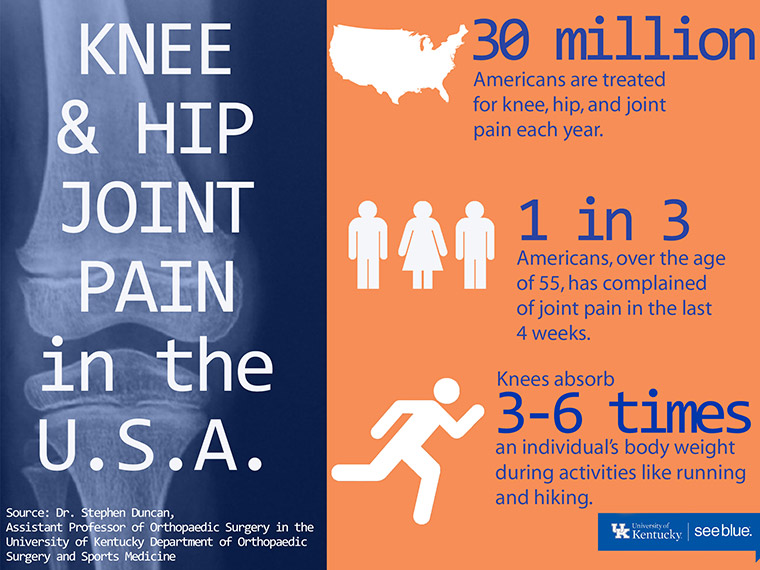The woes of joint pain

What you can do to prevent it
Over a lifetime, our hips and knees get a lot of use. In the past four weeks over one-third of people in the United States 55 and older have complained of hip or knee pain to their physician. There are various ways individuals can reduce the strain placed on joints to maintain the health of their hips and knees.
Preventing knee and hip pain
Individuals have some ability to reduce the strain put on their knees and hips. The relationship between being overweight and joint pain is a contentious one. If joint pain is rooted in being overweight, it is important to lose weight in a healthy way. Developing a stronger core can also lessen the strain placed on joints.
People who engage in high-impact activities, like running, basketball, or Zumba, can take steps to prevent joint issues like torn ligaments and inflammation. Weight reduction, if recommended by a physician, can be a way to reduce impact. Physical therapy to strengthen the muscles surrounding the hips and knees can do wonders in reducing and preventing  joint pain.
joint pain.
Treatment options
In the United States, nearly 30 million people are treated for knee and hip joint pain annually. Too often, joint pain is dismissed as part of aging. Persistent joint pain, which lasts more than six months and is not responding to activity modification and/or anti-inflammatories, means it’s time to see an orthopedist.
Common treatments for knee and hip joint pain are arthroscopy and joint replacement. Arthroscopy can be done for patients with mild arthritis to remove a torn meniscus in the knee or a labrum in the hip. Recovery from this procedure is typically four to eight weeks. Hip or knee replacements are done for more advanced arthritis. Recovery for hip replacement is typically four to eight weeks, but is largely dependent on the patient’s health. Partial knee replacement recovery lasts approximately four to six weeks; a total knee replacement has a recovery time of six to 12 weeks.
Reducing the chances of needing orthopedic surgery is possible, but knowing the signs of pain that may require medical intervention is vital.
Dr. Stephen Duncan for the October 2016 issue

